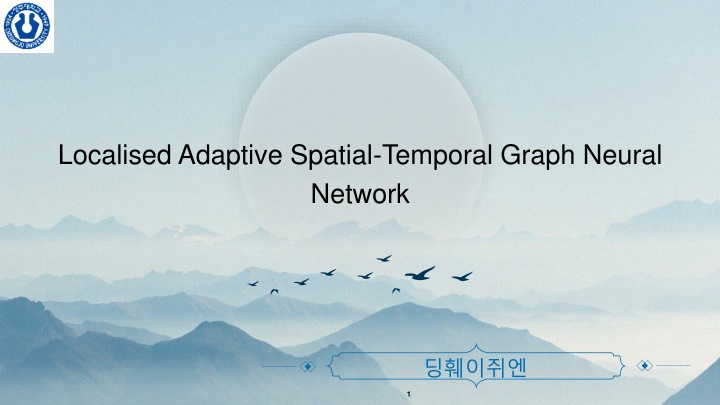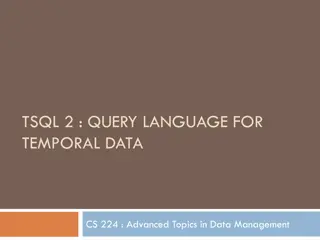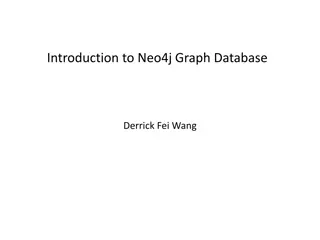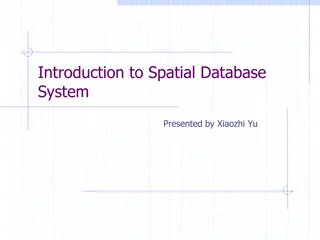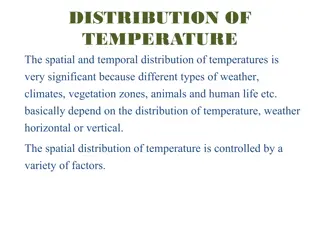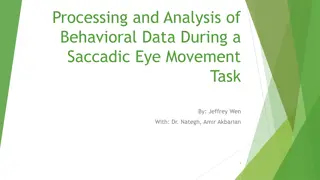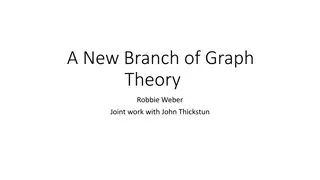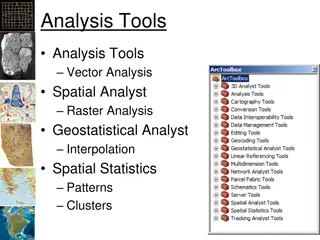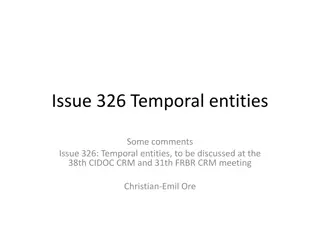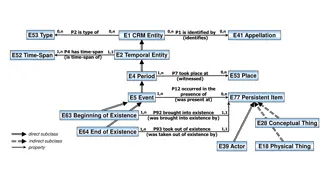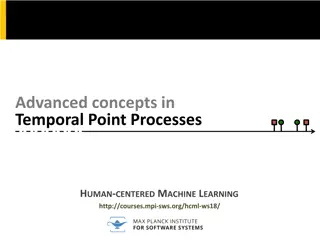Localised Adaptive Spatial-Temporal Graph Neural Network
This paper introduces the Localised Adaptive Spatial-Temporal Graph Neural Network model, focusing on the importance of spatial-temporal data modeling in graph structures. The challenges of balancing spatial and temporal dependencies for accurate inference are addressed, along with the use of distributed sensing systems for data collection. The model aims to learn functions that map historical observations to future predictions in graph structures using Graph Convolution Networks and Adaptive Graph Convolutional Recurrent Networks.
Uploaded on May 10, 2024 | 5 Views
Download Presentation

Please find below an Image/Link to download the presentation.
The content on the website is provided AS IS for your information and personal use only. It may not be sold, licensed, or shared on other websites without obtaining consent from the author.If you encounter any issues during the download, it is possible that the publisher has removed the file from their server.
You are allowed to download the files provided on this website for personal or commercial use, subject to the condition that they are used lawfully. All files are the property of their respective owners.
The content on the website is provided AS IS for your information and personal use only. It may not be sold, licensed, or shared on other websites without obtaining consent from the author.
E N D
Presentation Transcript
content 01 02 03 04 05 Background Spatial-Temporal Data as Graph Structure Modeling the Spatial Network Adaptive Graph Sparsification Experiments and Results 06 Conclusion 07 Summary and Discussion 2
01 Background 3
Background 01 02 Challenge 1: Although it is commonly accepted that both This paper proposes Localised Adaptive Spatial- Temporal Graph Neural Network. This method surprisingly observed that spatial dependencies could be largely ignored during inference without losing accuracy. spatial and temporal dependencies are vital for inference, it is unclear whether and to what extent the information provided by these dependencies overlaps. Challenge 2: the data to construct the spatial-temporal graph models are collected via distributed sensing systems e.g., sensor networks. However, making predictions of each vertex using these models requires the history of other vertices,thereby involving data exchange between sensor nodes 4
02 Spatial-Temporal Data as Graph Structure 5
Spatial-Temporal Data as Graph Structure Definition 1 Graph Definition :The graph is known as the spatial network, is the set of nodes, and E is the set of edges. Let the spatial-temporal data as a sequence of discrete frames with Definition 2 : the edges are presented with an adjacency matrix : the node feature matrix with dimension at timestep for Definition 3 Given graphs and historical observations. This paper aim to learn a function observations in the next which maps the historical observations into the future timesteps: 6
03 Modeling the Spatial Network 7
Modeling the Spatial Network Graph Convolution Networks (GCNs) :is the adjacency matrix of the graph with added self-connections. is the identity matrix. :is the degree matrix. :is a trainable parameter matrix. :is the activation function. :is the output. All information regarding the input at timestep t is aggregated in . 8
Modeling the Spatial Network Adaptive Graph Convolutional Recurrent Network (AGCRN) where :is the normalized self-adaptive adjacency matrix and :is the embedding dimension for :Each row of presents the embedding of the node. 9
04 Adaptive Graph Sparsification 10
Adaptive Graph Sparsification Adaptive Graph Sparsification(AGS) :The normalized self-adaptive adjacency matrix :is a training set :is a train sample :is the ground-truth of node in Given a pre-trained model , This paper introduce a mask to prune the adjacency matrix . The shape of is identical to . Specifically, given , we obtain by optimizing the following objective: :is the element-wise product :corresponds to binary gate that indicates whether an edge is pruned :is a weighting factor for L0-regularization of 11
05 Experiments and Results 12
Experiments 13
Results 14
06 Conclusion 15
Conclusion 01 02 In this paper, the tested spatial- temporal datasets, the information provided by the spatial dependencies is primarily included in the information provided by the temporal dependencies. Therefore, the spatial dependencies can be safely ignored for inference without a noteworthy loss of accuracy. This paper turns out to demonstrate that although the information contained in the spatial and temporal dependencies overlaps, such overlapping provides the vital redundancy necessary for properly training a spatial-temporal graph model. Thus, the spatial dependencies cannot be ignored during training. . 16
07 Summary and Discussion 17
Summary and Discussion Summary Discussion This paper gives us some inspiration in optimizing graph neural networks and provides ideas for future study. This paper propose AGS, a novel algorithm dedicated to the sparsification of adjacency matrices in adaptive spatial-temporal graph neural networks. Primary experiment results showed that The spatial adjacency matrices could be sparsified to over 99.5% without deterioration in test accuracy on all datasets. 18
Thank you ! 19
